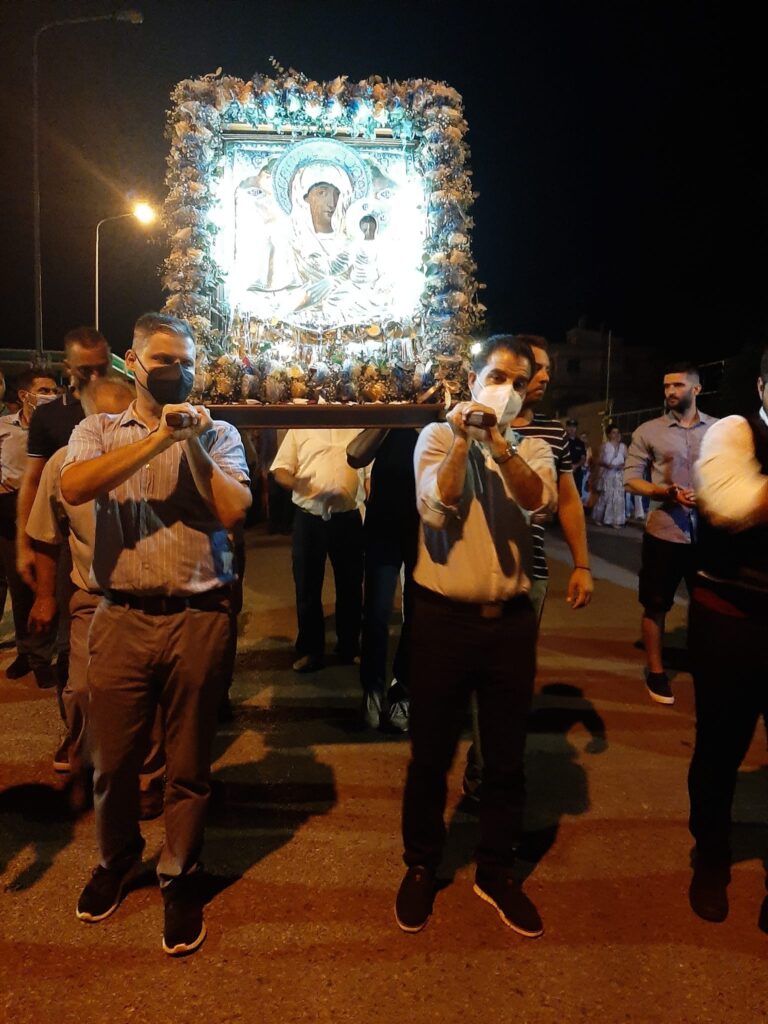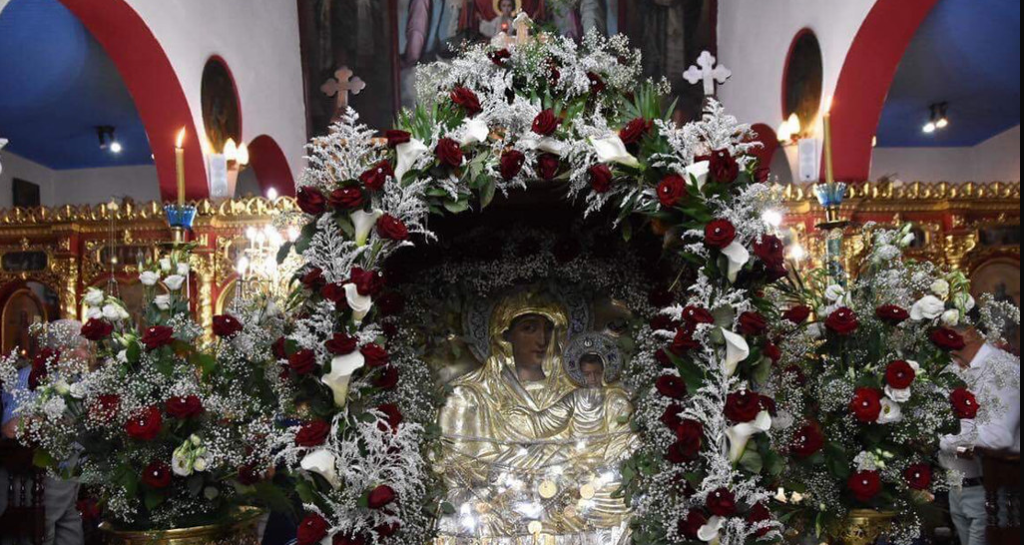The Miraculous Icon of Virgin Mary of Nea Roda


The story of the icon
It was a day in 1922 when the christian population of Skopia, a small town on the island of Aloni, near Konstantinoupoli were hurriedly gathering whatever was most valuable to them that they could carry, in anticipation of taking the hard road to exile. A young girl, Vasileia Tsakalou, age 16 suddenly remembered. The miraculous icon of Virgin Mary, the protector of their village. She rushed into the village church and came out with the icon of the Virgin Mary. They all boarded a ship, left behind their houses and businesses and sailed into the unknown. The only ray of hope was the Icon of Virgin Mary that always brought prosperity to the faithful.
They sailed across the Aegean and landed on the island of Limnos. Their first action was to visit the local church in the town of Myrina and give thanks to God for their salvation. They thought the church at Myrina was a good place for their icon to rest.
Some years later the refugees from Turkey were moved to a new permanent settlement on the border to Mount Athos. Because most of the refugees came from the village of Roda in Asia Minor they called their new home Nea Roda which means New Roda or New Roses. They settled there and worked the sacred lands that were gifted to then by the monks of Mount Athos. They made a new life for themselves but for the people from Scopia something was missing. It was their icon of the Virgin Mary, the protector of their village, that they had left behind in a church at Myrina on the island of Limnos.
When they settled they dispatched a local captain, captain Priakonas in his boat, St George with instructions to bring the icon and the other sacred objects they left behind on the island of Limnos. He came back with the icon on the 9th of October 1933.
Every year it is celebrated on the 22nd and 23rd of August, with a magnificent church service and procession through the village as well as a fair. Many faithful from the surrounding villages congregate in Nea Roda to receive the blessing of the icon.
The technique of the icon
It is believed that the icon is as old as the 14th century. It was painted in egg tempera during the Byzantine times and it was retouched sometime during the 19th century. Finally, it was covered in sheet silver in the 20th century.
It is a double faced icon, painted on both sides. It was a procession icon that was meant to be mounted on a pole. At the front there is Virgin Mary in the Odigitria style, holding the baby Jesus. At the back, the lesser known side, is the representation of the crusifiction of Jesus Christ. This side is lesser known and extensively damaged. We can just see Jesus on the cross and to the right of the cross are the Virgin Mary and two other female figures while on the left stand St John the Baptist and the Roman ekatontarhos. The better known front of the icon has been covered in silver sheeting in order to prevent further damage.